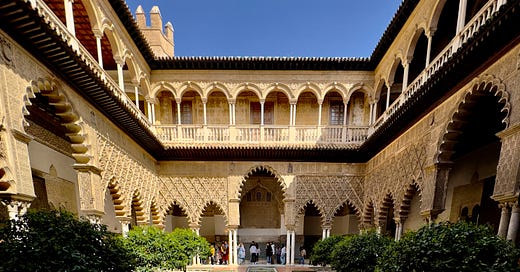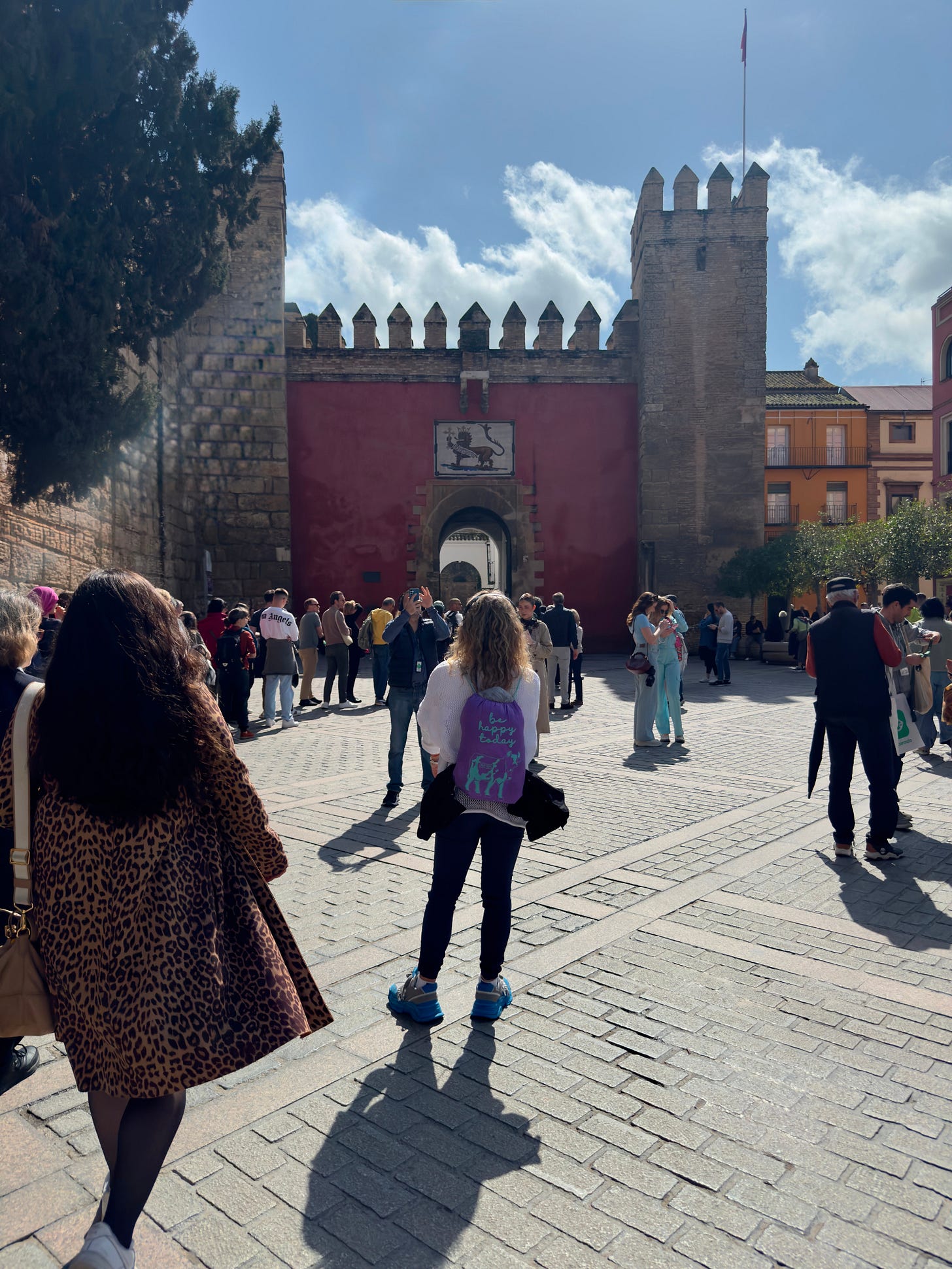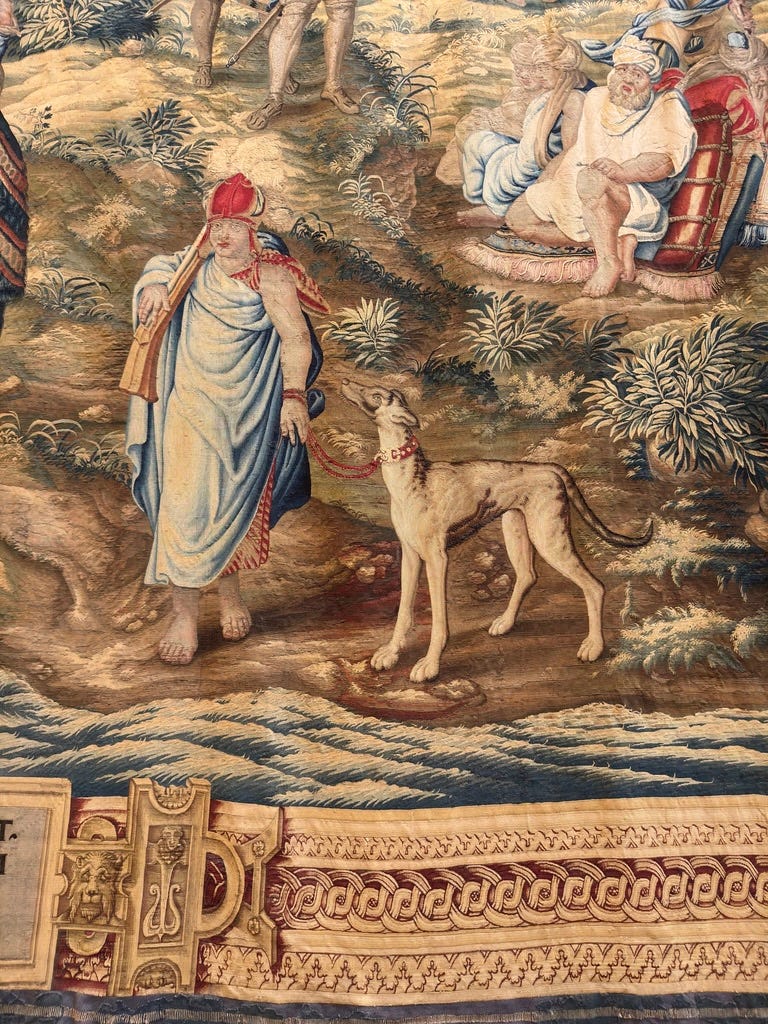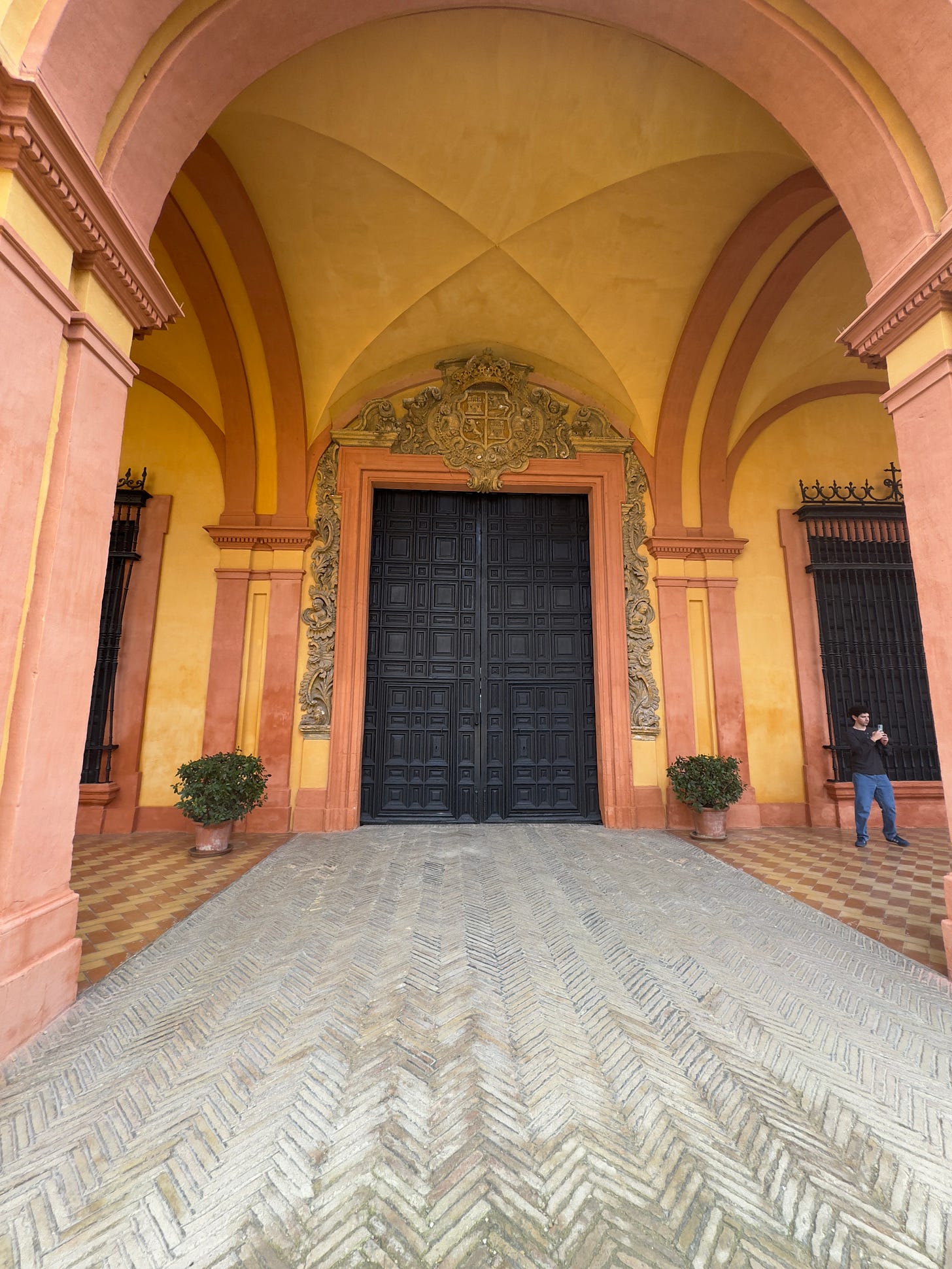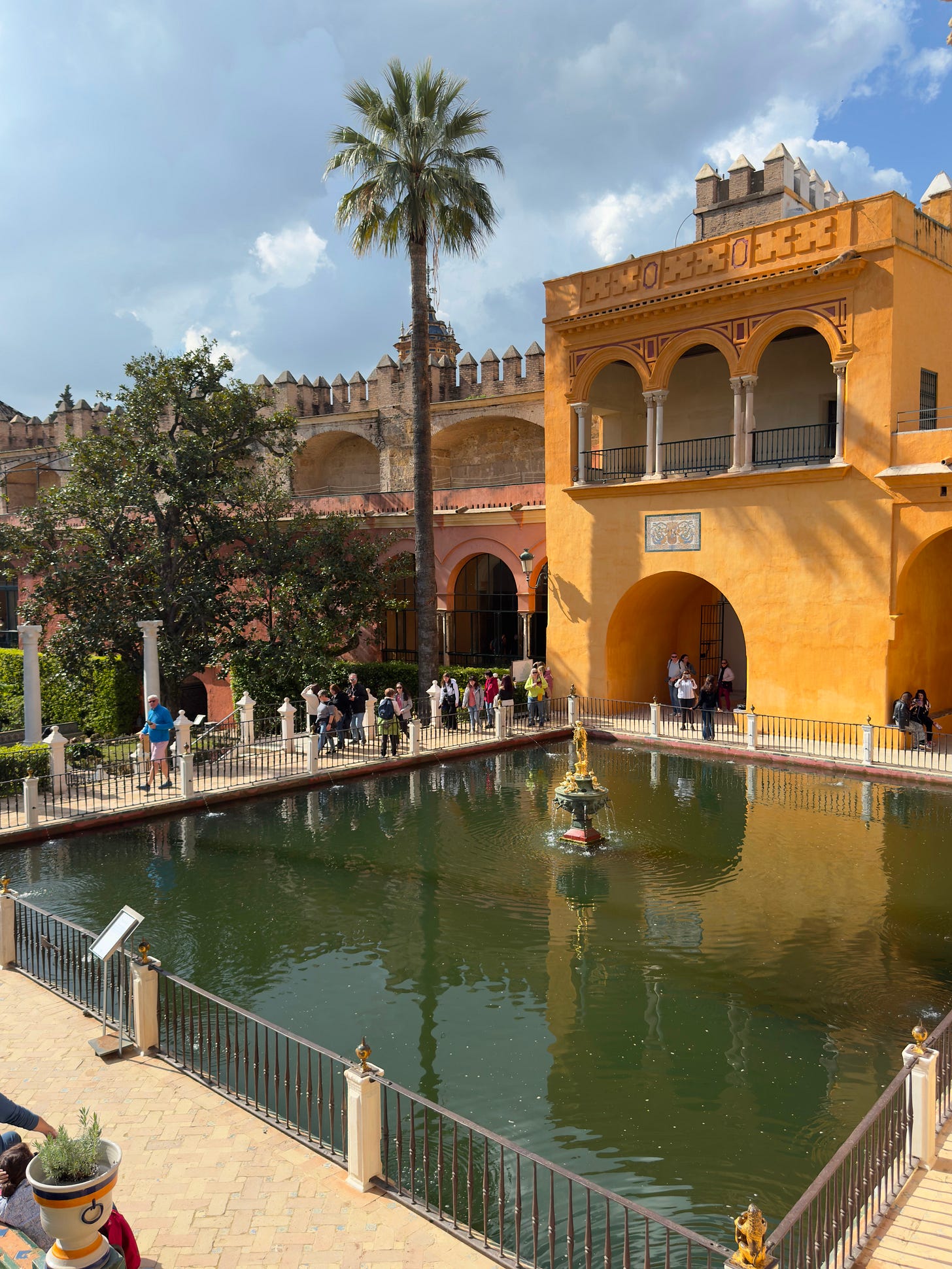Seville is one of the closest Spanish cities to the tiny Portuguese hamlet where my family lives. For us, Seville provides a seemingly easy opportunity to visit a foreign country by driving just a few hours. Earlier this month, we planned to spend four days and three nights in Spain. We hoped this would be sufficient time to see the Sé Cathedral of Seville, the Real (Royal) Alcázar Palace, and several city parks. Here, I’ll focus on the Real Alacázar, a remarkable palace that has been used by royalty since it was built in the early Middle Ages.
After this palace was built, Seville became increasingly important. Around 1503, Queen Isabel designated Seville as the primary port for Spain’s trade with its colonies in the Americas. Seville, located on the Guadalquivir River, is 90 kilometers from the coast. According to information provided to Alcázar visitors: “Sevilla was the harbor chosen by the Queen as it offered security against pirate attacks.” Spain remained the only Europen trading partner with its colonies in the Americas from 1503 until 1718. During this time, Spain brought back silver and gold from Peru and Mexico and became incredibly wealthy.
The Alcázar has been designated as a World Heritage Site by the United Nations Educational, Scientific and Cultural Organization (UNESCO). This agency works to promote world peace and security through international cooperation in education, art, science and culture. The UNESCO website describes Alcázar in this way: “The original nucleus of the Alcázar was constructed in the 10th century as the palace of the Moslem governor, and is used even today as the Spanish royal family's residence in this city, thereby retaining the same purpose for which it was originally intended: as a residence of monarchs and heads of state.”
“Built and rebuilt from the early Middle Ages right up to our times, it consists of a group of palatial buildings and extensive gardens. The Alcázar embraces a rare compendium of cultures where areas of the original Almohad palace …. coexist with the Palacio de Pedro I representing Spanish Mudejar art, together with other constructions displaying every cultural style from the Renaissance to the Neoclassical.”
When we arrived for our self-guided audio tour of Alcázar, we were surprised to see a long line even though it was a weekday during winter. Once inside, the large line of visitors dispersed throughout the huge palace.
The Four Walls Surrounding a Courtyard
After I entered the Alcázar, the third open courtyard I saw had a remarkable mix of architectural styles. Included below are photos of the four walls surrounding the large courtyard.
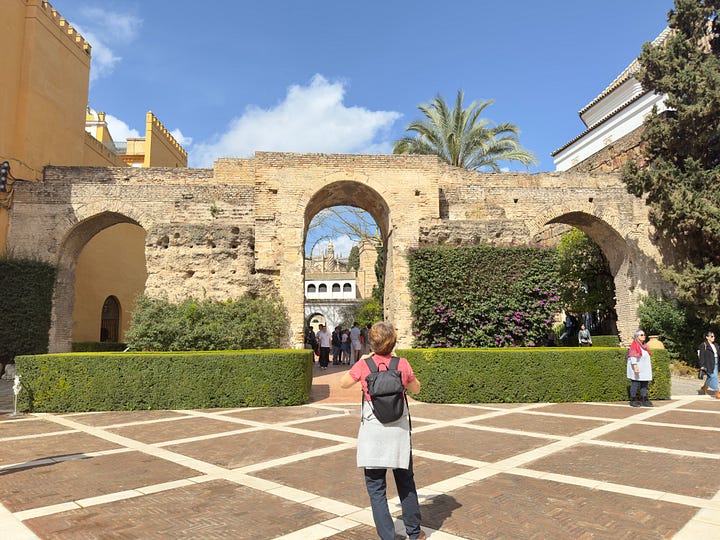

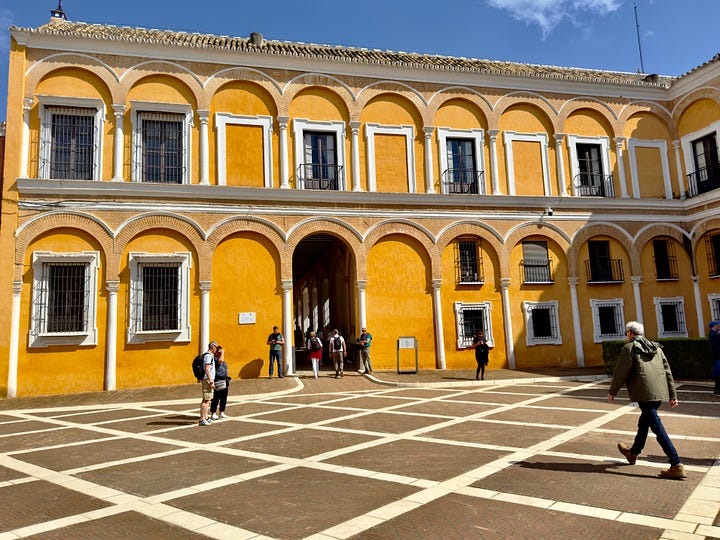

Just off this courtyard is the Admirals Hall where Amerigo Vespucci, Magellan and Elcano planned the first travel around the world. It was easy to envision Spain’s colonial past while walking through the impressive buildings and gardens that form the Alcázar.
Each room I entered had so much craftsmanship in the floors, walls and ceilings, it was challenging to take everything in. Here are details from a few of the rooms.
Floors
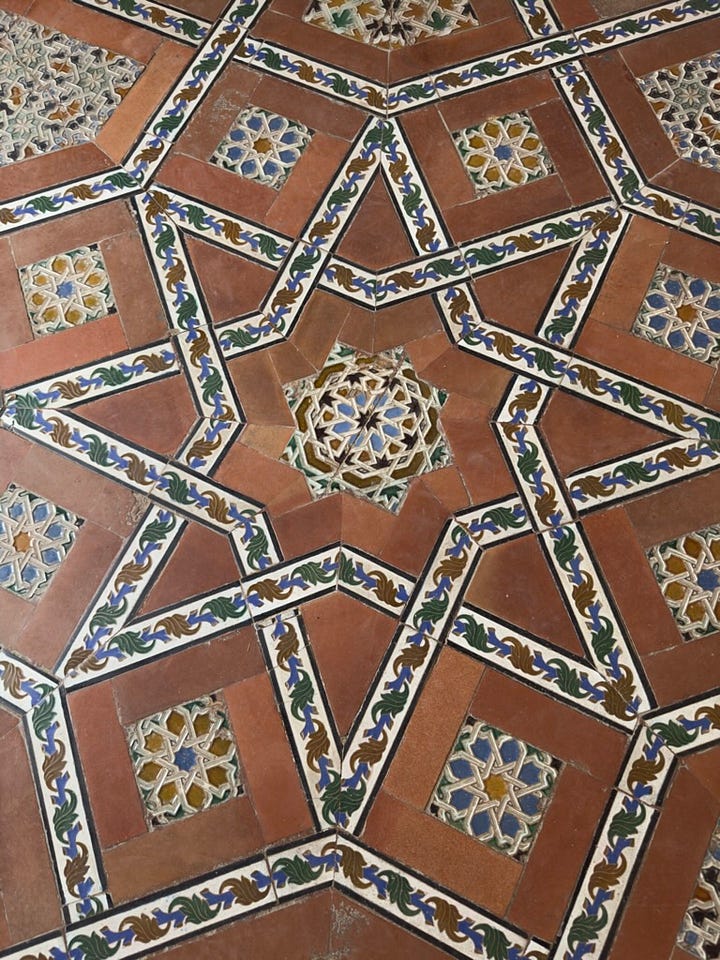
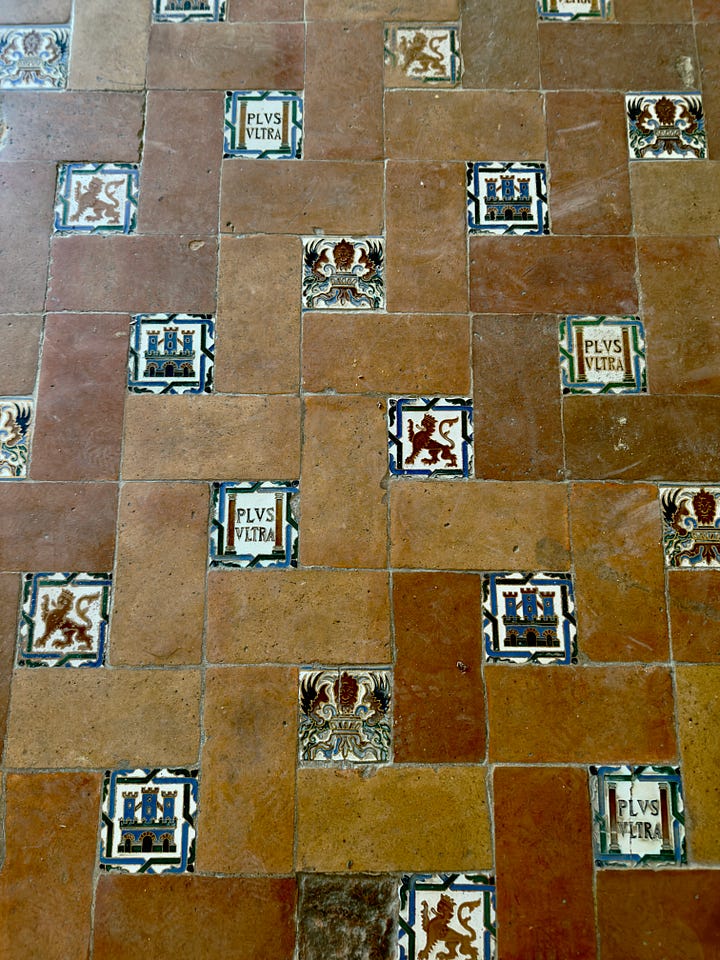
Ceilings
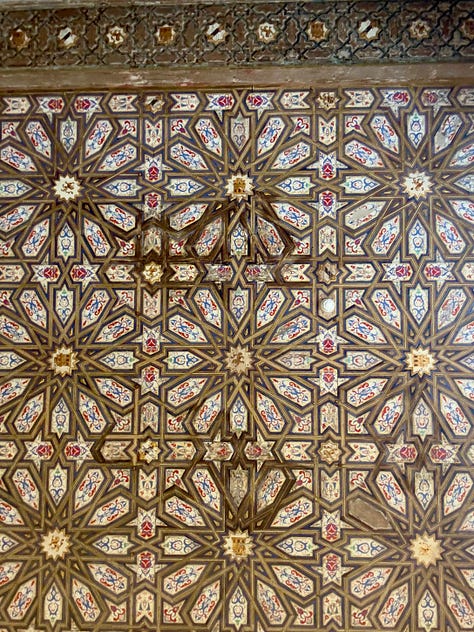

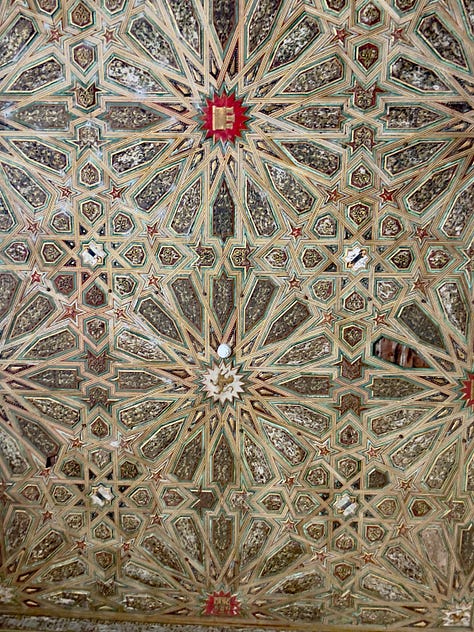
Below, on the left, is an image of the carving found on the wall surrounding one of the courtyards. To the right, below, is a carving from the interior of an archway.
Details
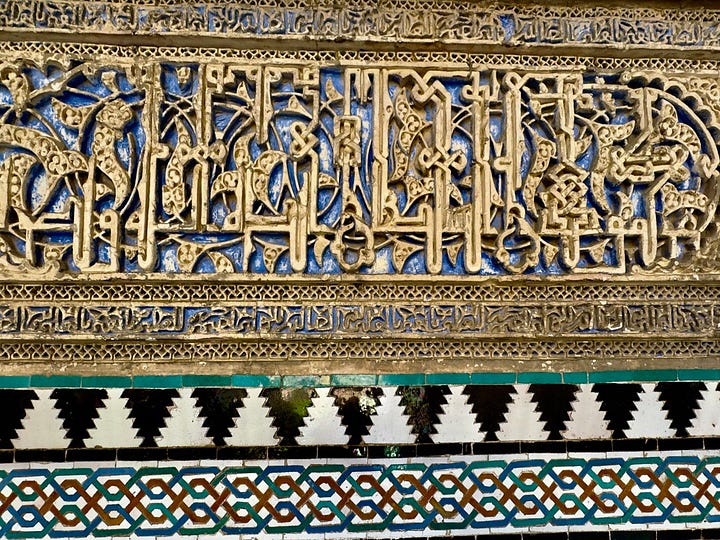
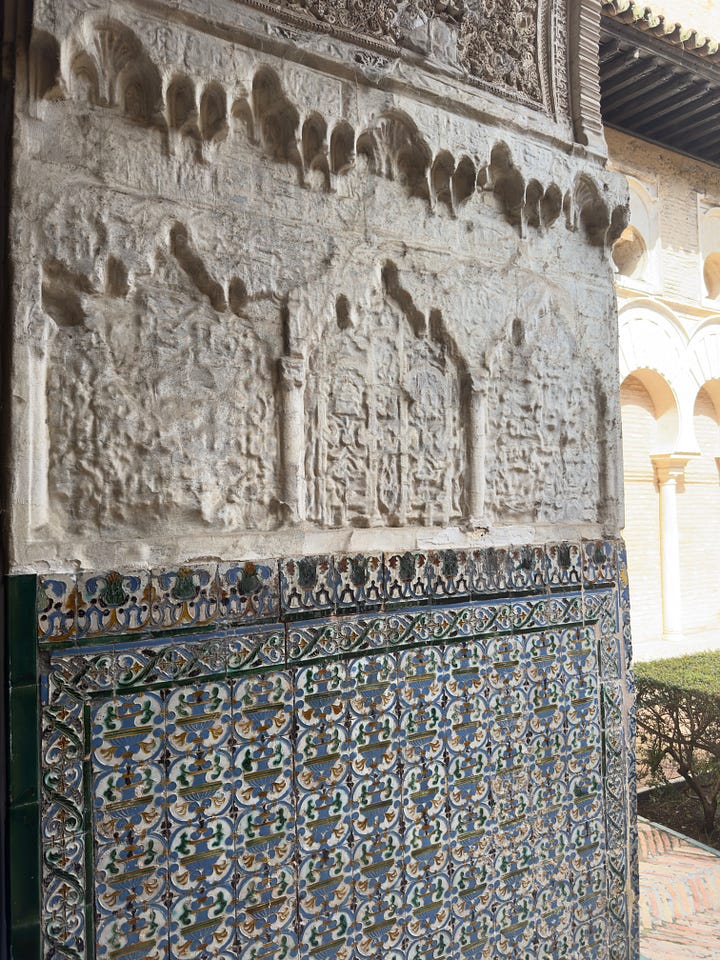
The courtyards were filled with orange trees, as well as shrubs, flowers and fountains. How remarkable it must have been in prior times to see the stars and planets in the dark sky from these courtyards. Now, Seville is a city of more than 700,000 and has the accompanying light pollution one would expect; so, the stars in the nighttime sky at the Alcázar would not appear as bright as they once were.
In the private spaces of the Alcazar, we often did not see any doors, just archways that led from one interior garden space into a private living area.
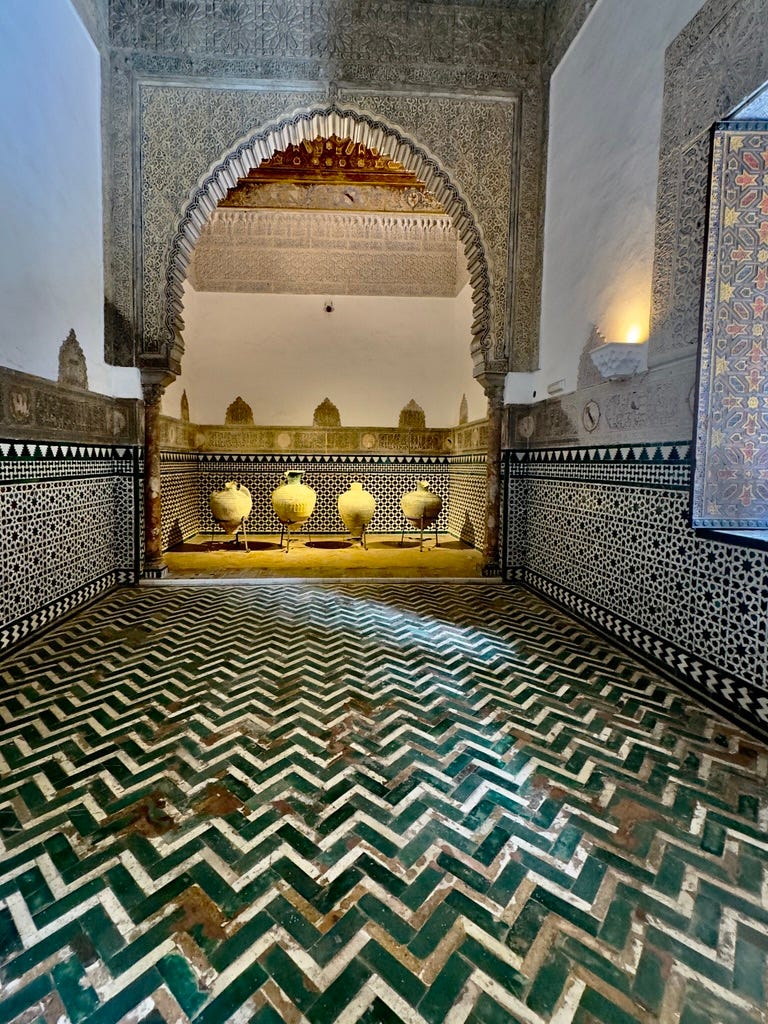
It’s surprising how well preserved the palace is. As the UNESCO World Heritage website states: “The Alcázar is …(a) monument that retains the integrity of the phases of the various periods in which it was built. The rooms, patios and gardens of the original Almohad palace are preserved in their original state, as are the Mudejar constructions that make up the Palacio de Pedro l and the remaining later constructions and gardens that comprise the present-day .. [Alacázar complex].”
Tapestries Hall
The Tapestries Hall of the Real Alcazar is filled with ancient tapestries on its walls. The original tapestries were commissioned by Carlos V around 1535 and were woven between 1548 and 1554 in Wilhelm Pannemaker’s workshop. Sadly, the Lisbon earthquake of 1755 totally destroyed the Tapestry Hall and all the tapestries it contained. During the eighteenth century, after the earthquake, Philip V commissioned exact replicas of the tapestries that were destroyed. These replicas are the ones hanging in the Tapestry Hall today.
The magnificent gardens at the Alcázar can be viewed from a second floor covered walkway which surrounds much of the garden area. I’ll share photos of the Alcázar gardens in winter in a future newsletter.
Have you visited this UNESCO World Heritage Site? If so, what were your impressions?
Resources
UNESCO World Heritage Site - Real Alcazar
Almohad Caliphate
Mudéjar art
Audio tour of Real Alcázar
Seville app
The Map as History: The Portuguese and Spanish Empires: Seville and its monopoly on trans-Atlantic trade
Vegetarian Recipes Worth Trying
1-Bowl Vegan Gluten-Free Carrot Cake
I’ve made this carrot cake multiple times and it is always good. I did not use gluten-free flour when I baked it. For the frosting, I’ve tried both types of vegan buttercream frosting linked in the bottom of the recipe. I usually double the frosting recipe. So, so good!

